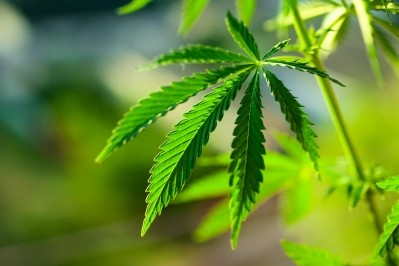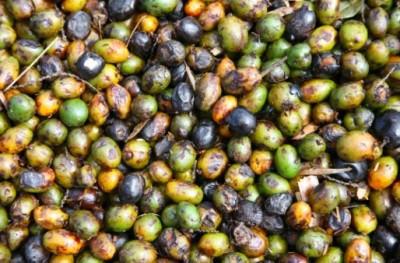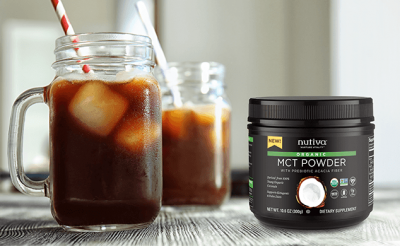Guest Article
For herbs, 2017 was a very good year

Rising sales
2017 appears to have been another good year for the herb and botanical industry in the US and elsewhere. As published in HerbalGram’s annual herb market report, total sales for herbal DS was a record $7.[1] 47 billion in 2016, and, although at the time of this writing it is still too early to determine total year-end sales figures for the various channels of trade for botanical dietary supplements, if the 6.8% projected rate of increase as calculated by Nutrition Business Journal are accurate, 2017 herb sales could easily exceed a record $8 billion.
An area of interest in the ‘good news department’ is the increased publication of randomized controlled human clinical trials (RCTs) on herbs and phytomedicinal preparations, which in turn has resulted in more publications of systematic reviews (SRs) and meta-analyses (MAs) -- collections of RCTs that meet the criteria established in the SR or MA -- the SR being more general, the MA being more statistically confined.
What’s been missing from much of the dietary supplement community and industry reporting, with a few exceptions, and from the reporting in the general media, is the news of the frequently positive conclusions from these reviews that often strongly suggest – in some cases actually demonstrate – therapeutic benefits of the botanical and phytomedicinal preparations on which the RCTs were conducted.
Positive results in trials, meta analyses
Examples of the above include a 2016 MA on St. John’s wort extract RCTs that covered seven additional RCTs published since the landmark MA in 2008. Both MAs concluded that SJW extract is more effective than placebo in patients with mild-to-moderate depression, as effective as some conventional pharmaceutical anti-depressants, and safer than approved pharmaceutical antidepressants. A 2017 SR and MA of 28 RCTs on cranberry preparations and reduction of urinary tract infections (UTIs) in the Journal of Urology suggested that physicians recommend cranberry products to their patients with recurrent UTIs. The authors also suggested that such treatment “could also help reduce the widespread use of antibiotics, which is leading to the worldwide emergence of antibiotic resistant microorganisms.” And a 2017 SR/MA of 8 RCTs on pomegranate juice demonstrated a clinically meaningful reduction in blood pressure in the pomegranate drinkers.
While there is admittedly a range of quality in the design of many of the RCTs published in a given year, the lower-quality RCTs are often excluded in some of the SRs and MAs based on the inclusion criteria of the specific review. Additionally, there are various degrees of quality in these SRs and MAs, and their conclusions are not always consistent with other reviews published on the same botanical preparation in the same or similar set of RCTs. Nevertheless, the general trend appears to be heading towards positive conclusions for many botanical preparations, and this bodes well for the future of the botanical medicine communities, and, of course, for the consumers who expect safe and effective natural therapies.
Pooling the meta analytical results
The Increased number of SR/MA-s has led to a relatively new phenomenon in the botanical / phytomedicinal field: SRs of SRs & MAs of MAs. That is, researchers are not only pooling the statistics from multiple RCTs, but also, with the increased number of SRs and MAs on these RCTs, authors are combining the SRs and MAs into umbrella reviews of reviews! Recent example: In 2016 an SR of 10 SRs on ginkgo extract on persons with mild cognitive impairment and dementia concluded that the higher daily dose of 240 mg showed more efficacy than lower doses or placebo. While some observers might consider such a practice to be akin to mathematical sophistry, some of these produce positive results, adding more evidence of benefit for the tested botanical preparations.
Growth of Botanical Adulterants Program
Self-regulatory quality control initiatives also continued to garner increased industry interest. As an example, the ABC-AHP-NCNPR Botanical Adulterants Program (BAP) now has over 200 underwriters and supporters, which allowed the releasing of more publications in 2017 documenting the challenge of adulterated botanical raw materials, extracts, and essential oils. The Program published six new Botanical Adulterant Bulletins confirming the adulteration of cranberry, grapefruit seed extract, rhodiola, saw palmetto, St. John’s wort, and tea tree oil. The Program also published a Laboratory Guidance Document on analytical methods for detection of the adulteration of pomegranate. With increased sales of essential oils occurring in various channels of trade, particularly in multi-level / network marketing companies, supplies for some oils is predictably tight. In response to this increased demand, the Botanical Adulterants Program has made available a highly authoritative and detailed guide to the adulteration of essential oils.
CBD: Growth of interest clouded by regulatory uncertainty
This past year also witnessed the increased consumer interest in the various suggested and documented health benefits of CBD (cannabidiol), a key non-psychoactive compound from cannabis. Numerous companies have been assertively marketing CBD-based products, with presumably strong sales in various natural food stores and on the Internet, despite legal concerns and the lack of federal regulatory acceptance of this compound as a new dietary ingredient. CBD, whether it is derived from medical cannabis or legal hemp, has begun to capture the mindsets of many consumers looking for a safe, natural product with a wide variety of benefits – It’s become a major factor in the current zeitgeist. As health professionals and consumers become more aware of the physiological importance of the endocannabinoid system (ECS), CBD demand will no doubt increase, the availability possibly tempered by the current regulatory ‘twilight zone’ in which CBD finds itself.
















